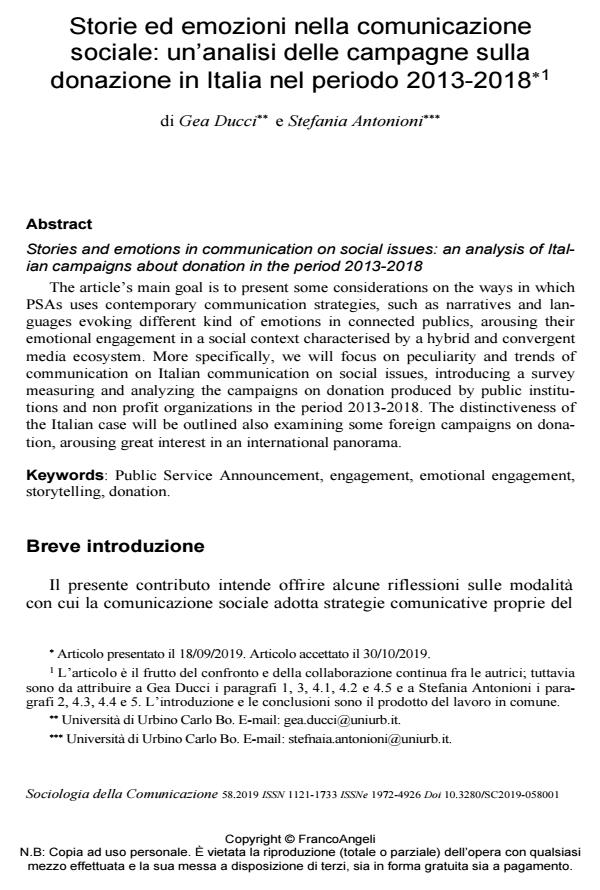Stories and emotions in communication on social issues: an analysis of Italian campaigns about donation in the period 2013-2018
Journal title SOCIOLOGIA DELLA COMUNICAZIONE
Author/s Gea Ducci, Stefania Antonioni
Publishing Year 2020 Issue 2019/58
Language Italian Pages 22 P. 5-26 File size 750 KB
DOI 10.3280/SC2019-058001
DOI is like a bar code for intellectual property: to have more infomation
click here
Below, you can see the article first page
If you want to buy this article in PDF format, you can do it, following the instructions to buy download credits

FrancoAngeli is member of Publishers International Linking Association, Inc (PILA), a not-for-profit association which run the CrossRef service enabling links to and from online scholarly content.
The article’s main goal is to present some considerations on the ways in which PSAs uses contemporary communication strategies, such as narratives and lan-guages evoking different kind of emotions in connected publics, arousing their emotional engagement in a social context characterised by a hybrid and conver-gent media ecosystem. More specifically, we will focus on peculiarity and trends of communication on Italian communication on social issues, introducing a survey measuring and analyzing the campaigns on donation produced by public institu-tions and non profit organizations in the period 2013-2018. The distinctiveness of the Italian case will be outlined also examining some foreign campaigns on dona-tion, arousing great interest in an international panorama.
Keywords: Public Service Announcement, engagement, emotional engagement, storytelling, donation.
Gea Ducci, Stefania Antonioni, Storie ed emozioni nella comunicazione sociale: un’analisi delle campagne sulla donazione in Italia nel periodo 2013-2018 in "SOCIOLOGIA DELLA COMUNICAZIONE " 58/2019, pp 5-26, DOI: 10.3280/SC2019-058001